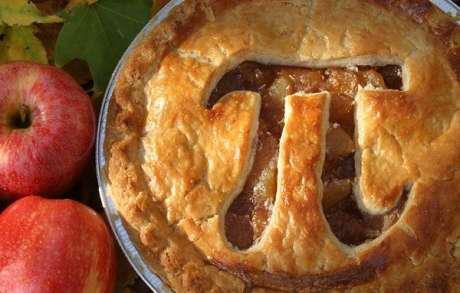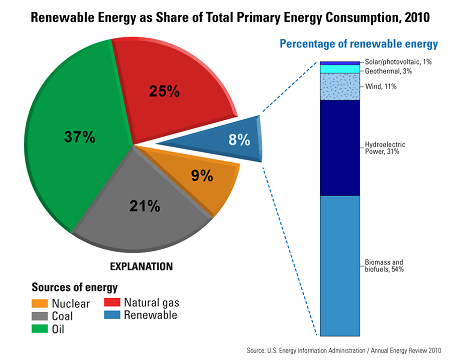Growing the Nuclear Pie for Pi Day
Mmmm....Pie.
As I'm sure readers of the ANS Nuclear Cafe are aware, tomorrow is March 14th, a.k.a. "Pi Day", in honor of everybody's favorite mathematical constant!
In honor of Pi Day I want to talk about, well Pie. Not the kind you eat, but rather the kind you grow. Yes, grow. Last month I wrote about the need for better conflict management in the nuclear sector and today I'd like to expand on that theme a bit.

For the past month I've been traveling through Europe for the Nuclear Literacy Project's "Nuclear Tourist" blog. Our super wonderful sponsors (thanks AREVA, American Crane and Fuel Cycle Week!) felt that sending me to different nuclear sites and organizations around the word would provide me an excellent education in nuclear communications and outreach, which I will be able to draw on in future programming for the Nuclear Literacy Project. As it turns out they were spot on - and I've found that almost every country has both cautionary tales (like our Yucca Mountain) and success stories - many of which hinge on acting early and often in working with the public to gain their trust and support.
The Energy Pie
So the first type of pie I want to talk about is the following Energy Information Administration chart from 2010 (below). Approximately 9% of total American energy is nuclear energy. It's really not that large a fraction when you look beyond electricity generation (19.2%) and at total energy use. For reasons of environmental and human health, as well as national and financial security we need to grow our piece of the energy pie. Shoot, as I'm finding here in Germany, for air quality alone we need to grow the amount of nuclear energy worldwide. "But how?" you might ask, "Natural gas is cheap - how can we compete?"
In my travels I've realized that we have placed the bar for public support far too low. Basically, support seems to be defined as, "no one is actively protesting or in litigation over the project." I'm just gonna say it - that is not support! That is trying to stay under the radar, which is part and parcel of why we have big public trust issues to begin with. We can and should set the bar much higher.
Growing the Public Outreach Pie
In order to grow our piece of the overall energy pie, we must "grow the pie" when it comes to public outreach as well. This is a conflict management technique that suggests that when you are trying to make a deal, specifically when it comes to siting facilities within a community, you have to make sure there is enough "pie" to go around. We all know that nuclear facilities bring high paying jobs and other economic benefits to a community, but there is something to be said for creating other visible and novel benefits as well.
For instance, in the Netherlands their waste reprocessing and storage facility hosts five art exhibits per year and they store priceless tapestries in the same room with nuclear waste - as it turns out the waste and art have similar requirements for temperature and humidity control. These programs ensure that the public stays engaged with the facility in a positive way long after construction. Creating a space where the public can visit, and programs that enrich the community, are great ways to "grow the pie." (Aside: Forgive me, because I am probably going to cite the Netherland's public art program in every article I write from now until forever - it is just that good.)
The reality is that construction of a nuclear facility and management of nuclear waste are very specialized areas of knowledge, which means they can't really be achieved with community input beyond allowing the facility to be built. However, we can create facilities and programs at nuclear sites with the specific intent of community involvement and enrichment (there are a number of facilities in the US which already do this quite well - I'm looking at you, McGuire Nuclear Station Symphony Nights).
Growing the Nuclear Pie
The thing about pie is that it is dessert, it is special and extra and delicious. So these programs should also be novel and exciting, yet big enough to include many different types of people - especially those who may otherwise lack a reason to be interested in or supportive of a nuclear facility. In fact, these programs should be created with abundant input from the community from Day One. Perhaps it's an art gallery, or a theater, or a baseball field - whatever the community wants. It's the process of asking, listening, and creating something together that strengthens trust.
This is a great way to build relationships, gain support and offer something really cool and special to the communities that house nuclear facilities. Let's be honest, when you are building a multibillion-dollar facility, a quarter of a million dollars or so to "grow the pie" and raise the bar on community involvement is a very good investment.
The nuclear industry is a good industry. We make technologies that provide clean energy, lifesaving medicine, and reduce weapons stockpiles - making the world a safer place. Our reputation is not consistent with the reality of what we do.
We can and should transform the reputation of the nuclear industry into one of consistent and effective community engagement. We can learn from Switzerland, Finland, France and the Netherlands, and have communities fighting for waste repositories and new nuclear builds. We can improve public outreach at existing sites, and improve our reputation and public trust in the process - ultimately allowing us to increase our contribution to the energy mix. We just need to grow the pie!
_________________________________
 Suzy Baker is currently traveling through Europe and reporting on her experiences at Diary of a Nuclear Tourist-a new initiative of the Nuclear Literacy Project. Keep up with her nuclear adventures and be sure to check out the new photo stream. If you have questions for nuclear industry leaders, write them on an index card, then scan or photograph and email to Suzy@nuclearliteracy.org
Suzy Baker is currently traveling through Europe and reporting on her experiences at Diary of a Nuclear Tourist-a new initiative of the Nuclear Literacy Project. Keep up with her nuclear adventures and be sure to check out the new photo stream. If you have questions for nuclear industry leaders, write them on an index card, then scan or photograph and email to Suzy@nuclearliteracy.org


